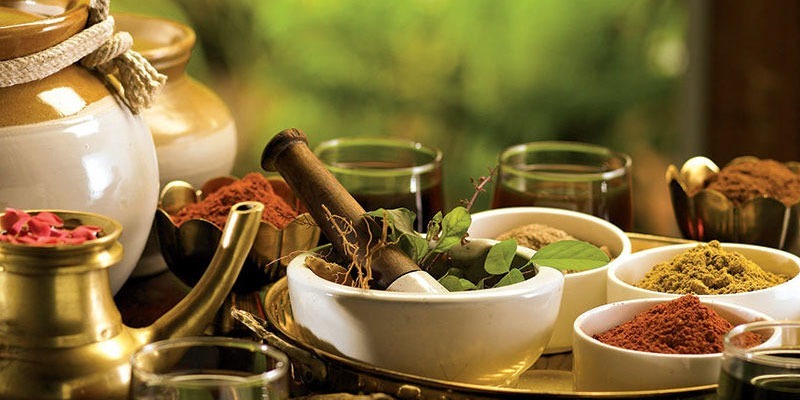What to Eat in Each Season According to Ayurveda
- Jul 01,2025
According to Ayurveda, food is not just fuel—it's medicine. The ancient science of life emphasizes that our diet should adapt to the seasons for optimal balance, energy, and immunity. Ayurveda categorizes the year into six seasons (Ritus), and each has specific dietary recommendations based on how seasonal changes affect the doshas (Vata, Pitta, Kapha).
At Panchkaram, our goal is to guide you towards better health and wellness by aligning your eating habits with nature. This seasonal approach to nutrition is at the heart of every Ayurvedic diet plan, helping you maintain internal harmony and improve overall well-being throughout the year.
1. Spring (Vasanta Ritu) – Cleanse and Lighten
March to May
In spring, the Kapha dosha dominates, bringing heaviness, lethargy, and excess mucus. To balance Kapha, Ayurveda recommends eating light, dry, and warm foods.
Ideal Foods:
-
Barley, millet, quinoa
-
Leafy greens like spinach, mustard greens
-
Spices like ginger, black pepper, turmeric
-
Bitter and astringent vegetables (asparagus, bitter gourd)
Avoid dairy, fried, and oily foods that increase Kapha. Spring is a great time for Ayurveda wellness detox therapies like Panchakarma, which eliminate accumulated toxins from winter.
2. Summer (Grishma Ritu) – Cool and Hydrate
May to July
Summer aggravates the Pitta dosha, leading to heat, acidity, and inflammation. The Ayurvedic diet in this season should focus on cooling and hydrating foods that pacify Pitta.
Ideal Foods:
-
Sweet fruits like watermelon, mango, and grapes
-
Cucumber, zucchini, and coconut water
-
Dairy products in moderation (like buttermilk)
-
Mint, coriander, fennel
Avoid spicy, salty, and sour items. Raw salads and cold soups work well. This season calls for rest, hydration, and mindful eating as part of your health and wellness routine.
3. Monsoon (Varsha Ritu) – Strengthen Digestion
July to September
Monsoon increases the Vata and weakens digestive fire (Agni). It’s essential to eat warm, easily digestible, and immune-boosting foods.
Ideal Foods:
-
Moong dal, rice, khichdi
-
Herbal teas (ginger, tulsi, cinnamon)
-
Steamed vegetables
-
Clarified butter (ghee) in moderation
Avoid uncooked food and green leafy vegetables that may carry germs. Follow a sattvic diet rich in spices like cumin and ajwain to support Ayurvedic diet plans and avoid seasonal imbalances.
4. Autumn (Sharad Ritu) – Balance the Fire
September to November
This is another Pitta-dominant season. Even though the temperature drops, residual heat can still irritate Pitta. A diet that is sweet, bitter, and cooling works best.
Ideal Foods:
-
Amalaki, pomegranate, dates
-
Whole grains like oats and basmati rice
-
Cooling herbs like coriander and neem
-
Ghee and coconut oil
Avoid alcohol, spicy food, and fermented items. Ayurveda wellness in this period focuses on calming the system, and herbs like Shatavari or Brahmi are recommended for balance.
5. Early Winter (Hemanta Ritu) – Nourish and Build Strength
November to January
Cold weather and increased Agni make this the best time to nourish the body. The Kapha and Vata doshas are both active, so grounding, warm, and rich foods are encouraged.
Ideal Foods:
-
Dairy (milk, paneer), ghee, and nuts
-
Wheat, rice, lentils
-
Root vegetables (carrots, beets, sweet potatoes)
-
Heavier spices like cloves, cinnamon, cardamom
Embrace heavier meals and avoid fasting. This is also the best time to build strength through both diet and health wellness practices like oil massages and gentle exercise.
6. Late Winter (Shishira Ritu) – Boost Immunity
January to March
This season continues to have cold and dryness, with Vata predominant. Warming and unctuous foods are still needed, but with a focus on immunity-boosting herbs and stronger digestion.
Ideal Foods:
-
Warm soups, porridges, and herbal teas
-
Garlic, ginger, and turmeric
-
Seasonal fruits like oranges, apples, and amla
-
Sesame oil and ghee for internal lubrication
Avoid dry, cold, and raw foods. Support your Ayurveda wellness plan with Chyawanprash, triphala, and regular steam therapy.
7. Tips for Following a Seasonal Ayurvedic Diet
-
Eat local and seasonal: Nature provides what your body needs. Trust it.
-
Listen to your digestion: If a food feels heavy or causes bloating, avoid it regardless of the season.
-
Stay hydrated appropriately: Drink warm water in winter and herbal-infused coolers in summer.
-
Include herbal support: Tulsi, ashwagandha, and giloy can be rotated as per seasonal needs.
Following an Ayurvedic diet plan based on the time of year can help prevent seasonal illnesses, improve energy, and support emotional balance.
Conclusion
Ayurveda teaches us that health is harmony—between our bodies and the seasons. Aligning your meals with nature’s rhythms is a powerful form of self-care and prevention. From balancing doshas to supporting digestion, seasonal eating is the foundation of Ayurveda wellness.
At Panchkaram, we offer personalized diet plans and wellness consultations that align with your prakriti (body constitution), current imbalances, and seasonal needs. Embrace health and wellness the Ayurvedic way—because the best medicine is already on your plate.






Comments not Found!